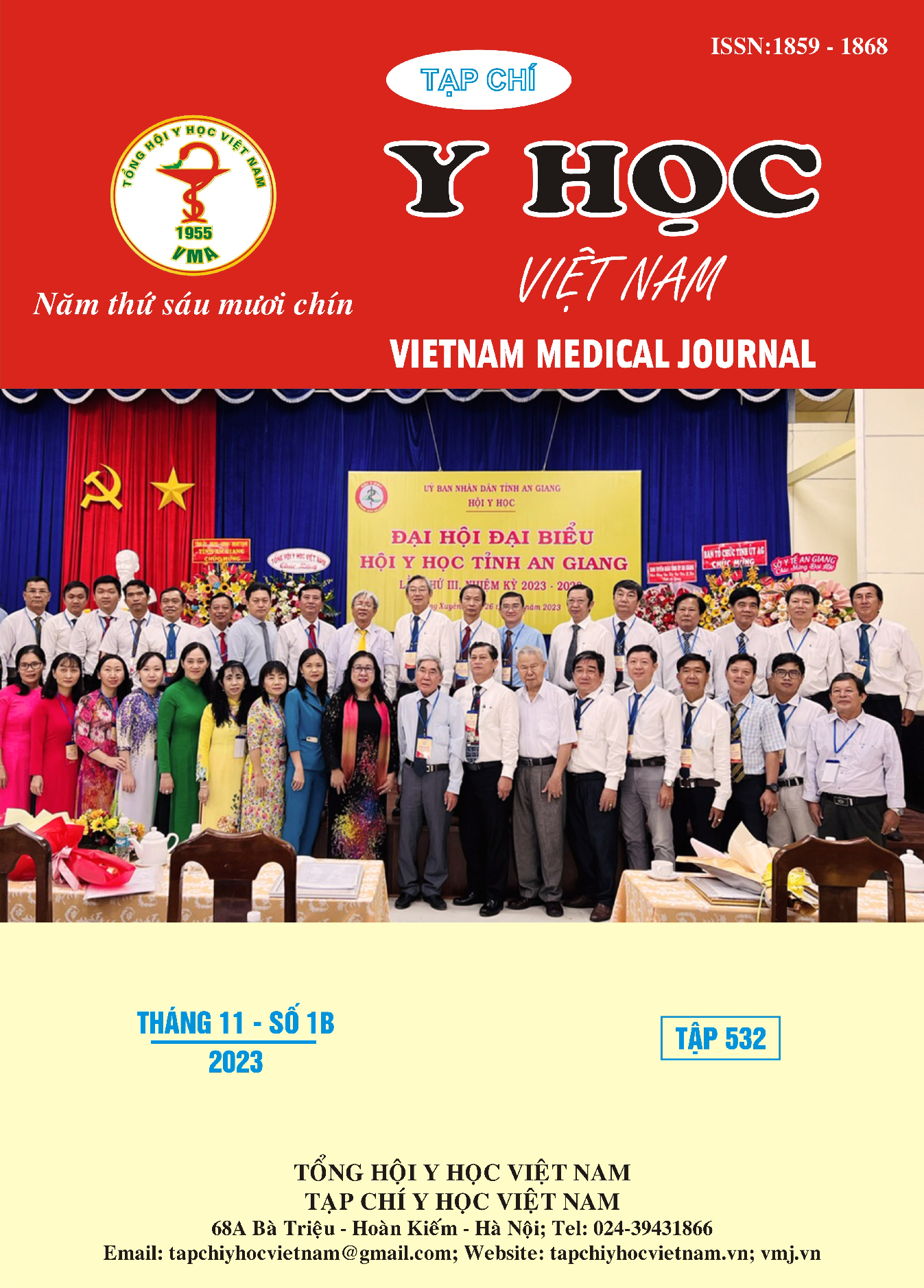SPLENECTOMY EVALUATION IN PATIENT IMMUNE THROMBPCYTOPENIA WHO DO NOT RESPONSE TO FIRST LINE THERAPY
Main Article Content
Abstract
Objectives: Study was done to evaluate on treatment results of patients immune thrombocytopenia (ITP) who do not respond to first line therapy. Subjects and methods: A descriptive prospective study of 20 patients with ITP who do not response to first line therapy. Results and conclusion: The mean age of the study group was 41.2 ± 16.2 years, rate of female/male is 1,22/1. Platelet count at first hospital admission was 8.3 ± 6.4G/l, the preoperative platelet count was 18.9 ± 17.9 with the time of therapy before splenectomy was 7.3 months. The response rate of splenectomy was 75%. The level of latelet count increased gradually after 1 week, 1 month and time to stop treatment. Response to splenectomy was found to be higher in patients who had the platelet count was more than 300 G/l on day 14 of surgery. The patients with no response and relapsed after splenectomy who required therapy corticoid combined eltrombopag, were more effective than prior to splenectomy, only 1 patient multirefractory. Four patients had mild infections and no patient died.
Article Details
Keywords
: Immune thrombocytopenia, splenectomy.
References
2. Ghanima W, Gernsheimer T, Kuter DJ (2021), “How I treat primary ITP in adult patients who are unresponsive to or dependent on corticosteroid treatment”. Blood, 137(20):2736-2744.
3. Kojouri K, Vesely SK, Terrell DR, George JN (2004), “Splenectomy for adult patients with idiopathic thrombocytopenic purpura: a systematic review to assess long-term platelet count responses, prediction of response, and surgical complications”. Blood, 104(9):2623-2634.
4. Rodeghiero F, Stasi R, Gernsheimer T, et al (2009), “Standardization of terminology, definitions and outcome criteria in immune thrombocytopenic purpura of adults and children: report from an international working group”. Blood. 113(11):2386-93.
5. Cao Minh Phúc (2016), “Đánh giá kết quả phẫu thuật nội soi cắt lách trong điều trị bệnh xuất huyết giảm tiểu cầu”. Luận văn tốt nghiệp bác sỹ nội trú. Đại học Y Hà Nội; 2016.
6. Nicola Vianelli, Francesco Rodeghiero et al (2013), “Splenectomy as a curative treatment for immune thrombocytopenia: a retrospective analysis of 233 patients with a minimum follow up of 10 years”. Haematologica2013;98(6):875-880.
7. Depre F, Aboud N, Mayer B, Salama A (2018), “Efficacy and tolerability of old and new drugs used in the treatment of immune thrombocytopenia: Results from a long-term observation in clinical practice”. PLoS One. 13(6):e0198184.
8. Trần Thanh Tùng (2017), “Nghiên cứu ứng dụng phẫu thuật nội soi cắt lách điều trị một số bệnh về máu thƣờng gặp”. Luận án tiến sỹ y học. Đại học Y Hà Nội; 2017.
9. Naveen Naz Syed, Salman Naseem Adil, Raihan Sajid et al (2007), “Chronic ITP: Analysis of various factors at presentation which predict failure to first line treatment and their response to second line therapy”. Journal of Pakistan Medical Association, 57(3), 126-129.


